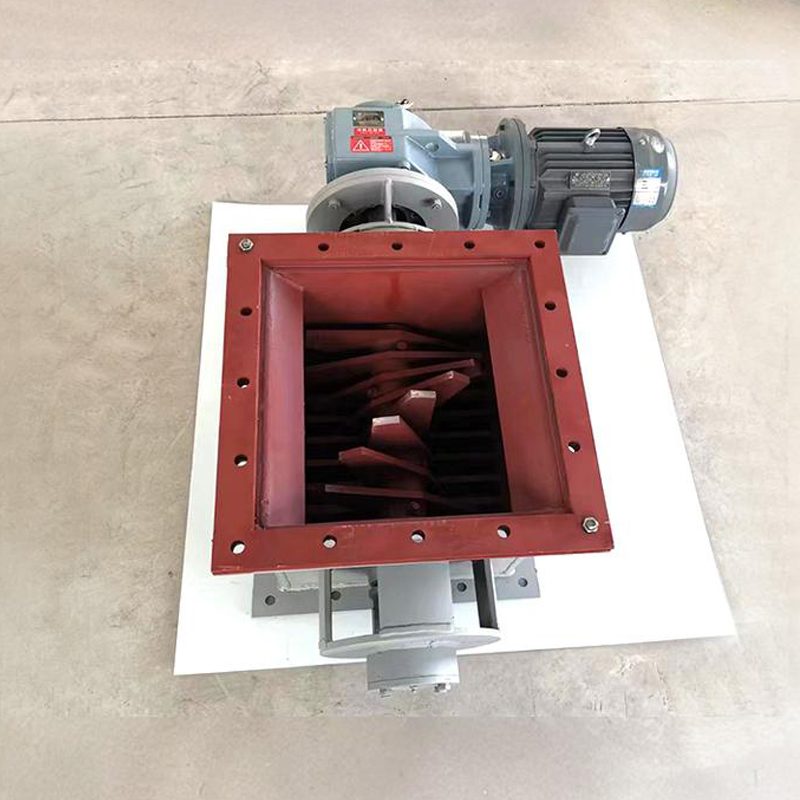What’s a pulse jet bag filter?
- an upper casing (clean air chamber)
- a middle casing (dust chamber)
- a hopper
- a pulse cleaning system
- filter bags
- filter bag frames(cages)
- inlet and outlet ports
- a differential pressure gauge
- a inspection door
- a dust discharge device
- a PLC control system
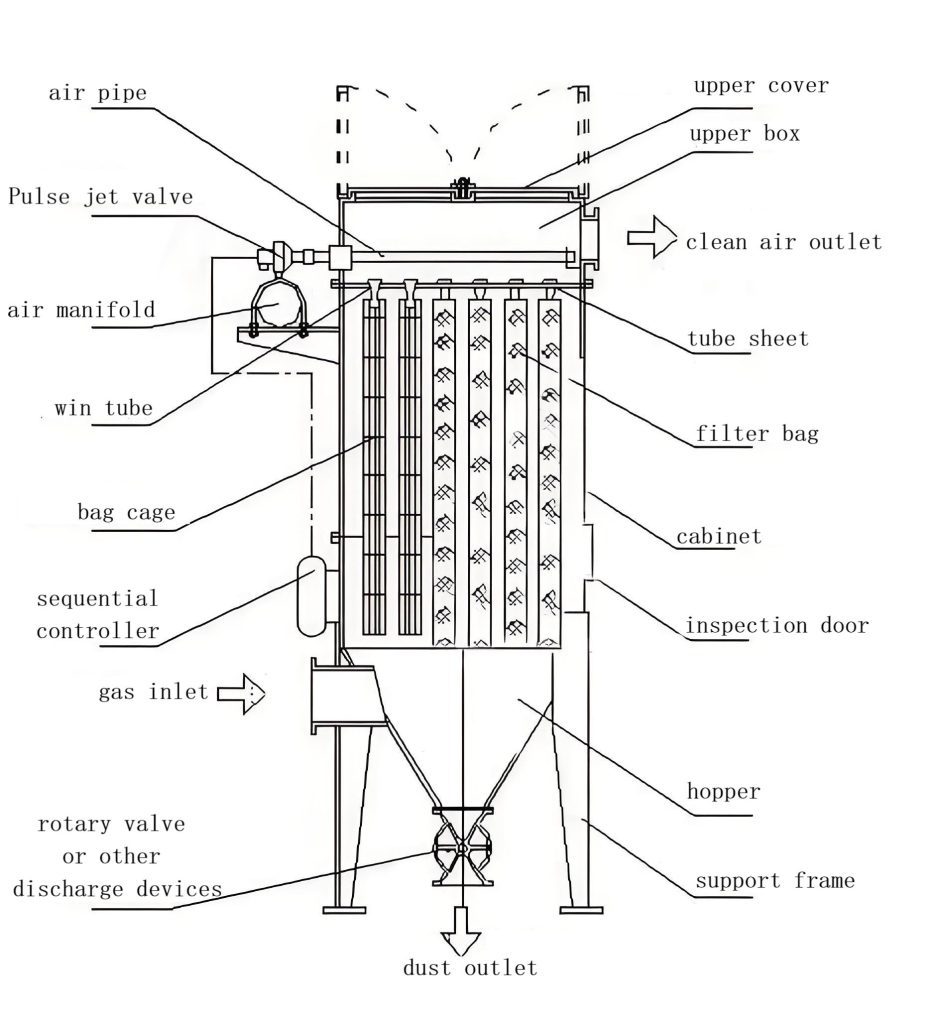
Function of main components
The internal air is driven by the fan’s power. A negative pressure environment forms inside the whole pulse jet bag filter. The ash air from the inlet enters the pulse jet bag filter under the pressure difference. The airflow passes through the dust filter bags, and the dust is trapped on the surface of the bags. The PLC control system sends pulse signals to the pulse valve. The high-pressure air from the compressor blows off dust from the filter bags. It collects the dust in the hopper, achieving dust recovery. And the clean air goes out from the outlet through the dust collector fan.
Tube sheet
The tube sheet in a pulse jet baghouse fixes and seals the filter bags. The holes on the same tube sheet should have uniform sizes. This will prevent dust leakage from loose or unsprung filter bag rings.The size of the baghouse tube sheet depends on the blowing capacity of the pulse valve.The tube sheet must support the weight of the filter bags and cages. The tube sheet in a baghouse dust collector is usually 4-6 mm thick. This depends on the number of dust filter bags in the chamber.To enhance the rigidity of the tube sheet, reinforcing ribs should be added. Use punching or plasma cutting on the tube sheet holes. Gas cutting is not allowed. The tube sheet, after fabrication, must be smooth and flat. Its flatness deviation must not exceed 2/1000 of its length.
Blow pipes
The blow pipes in pulse jet bag filters are all seamless. And they are straightened using a straightening machine.The blow short pipes (the nozzles) use tooling molds and carbon dioxide shielding during welding. This minimizes deformation and ensures dimensional tolerances between the blowing short pipes. A blowing port is on the underside of the blowing pipe. It faces the center of the filter bag. Each blowing pipe is equipped with a pulse valve connected to the compressed air distributor.The blowing pipe is fixed to the upper casing with a bracket. It has locating pins for accurate repositioning after each disassembly and reassembly.
Filter bags
The filter bag is the heart of a pulse jet bag filter, playing a key role in filtering dust. Dusty air passes through the filter bags. The bag traps the dust. An induced draft fan draws away the clean air. As dust accumulates on the surface of the bag, the resistance of the filter increases. Now, the pulse control system gets a signal. It blows back the bag, causing the dust to fall into the hopper. The discharge device then removes the dust from the filter. The efficiency of dust removal depends entirely on the filter bag.
Special features of a pulse jet bag filter
- Pulse jet bag filters are very efficient.
- The dust collection efficiency remains stable.
- A pulse jet bag filter has a compartmentalized design.
- A pulse jet bag filterhas a small footprint.
- pulse jet bag filters are highly adaptable of capturing a wide range of dust types.
Specification
| Product Series | PPC-32 | PPC-64 | PPC-96 | PPC-128 |
| chamber /pcs | 2-6 | 4-8 | 4-20 | 6-28 |
| filter bags of each chamber /bar | 32 | 64 | 96 | 128 |
| Size of filter bags/mm | Φ130*2448 | Φ130*2440 | Φ130*2448 | Φ130*23060 |
| Filter area of each chamber /m2 | 31 | 62 | 93 | 155 |
| Inlet dust concentration/ (g/m3) | ≤200 | ≤200 | ≤200 | ≤200 |
| Outlet dust concentration/(m g/m3) | <10 | <10 | <10 | <10 |
| Operating Pressure/pa | -500+2500 | -500+2500 | -500—2500 | -500-2500 |
| resistance/pa | 1470-1770 | 1470-1770 | 1470-1770 | 1470-1770 |
| Height/mm | 2063 | 2063 | 2063 | 2063 |
| Sizr of pulse valve(“) | 2.5 | 2.5 | 2.5 | 2.5 |
| pulse valve of each chamber /pcs | 1 | 1 | 1-2 | 2 |
| Air pressure for ash removal/mpa | 0.5-0.7 | 0.5-0.7 | 0.5-0.7 | 0.5-0.7 |
Pulse jet bag filter Applicable Fields
These pulse jet baghouses are suitable for:
- calcium carbide furnace dust removal
- electric furnace dust removal in ferroalloy plants
- steel plant flue gas purification
- coal-fired and small boilers in power plants
- garbage incinerator dust removal
- high-temperature flue gas dust removal in smelters
- aluminum plant flue gas purification
- cement plant rotary kiln dust removal
- carbon black plant tail gas dust removal
Knowledge center for pulse jet bag filter
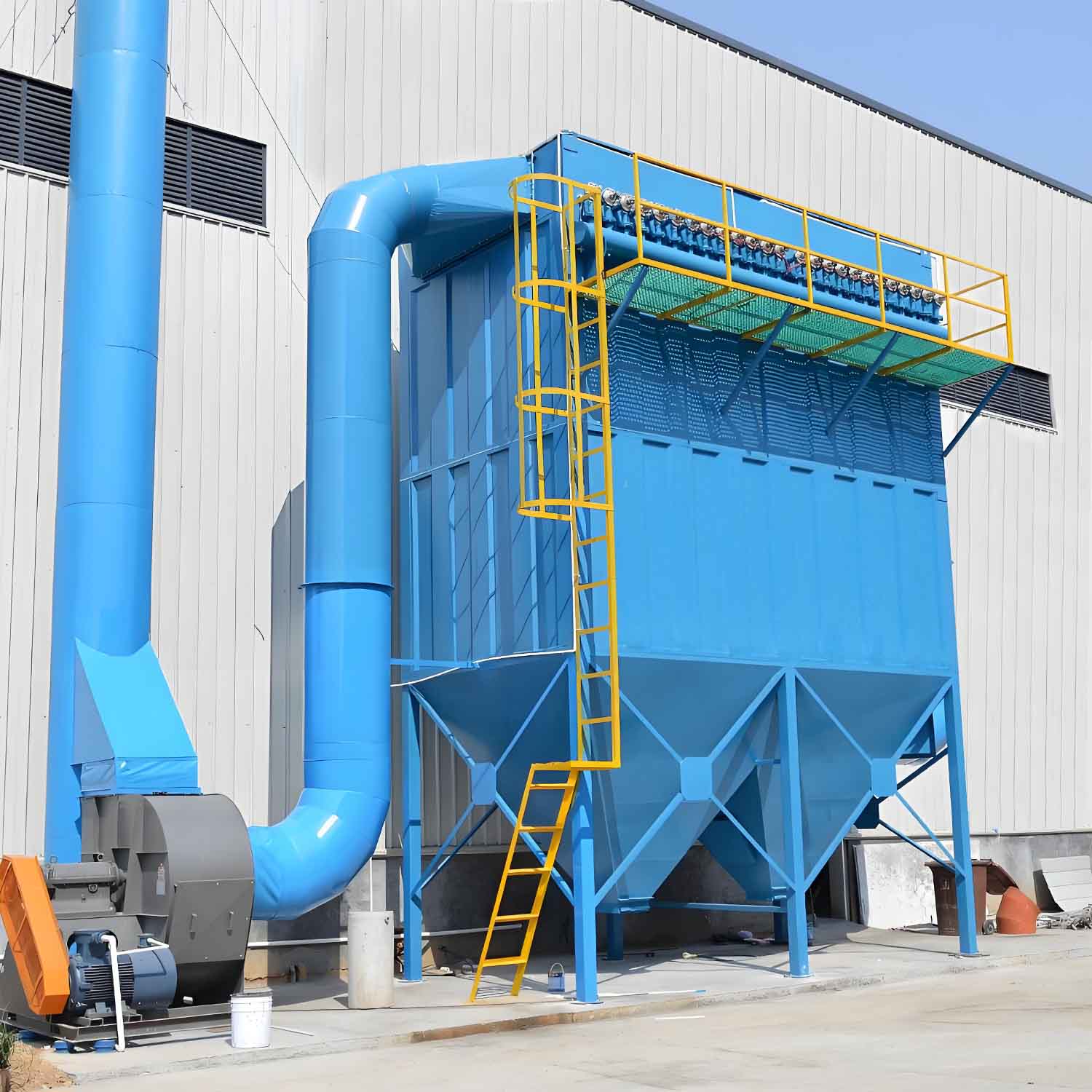
|
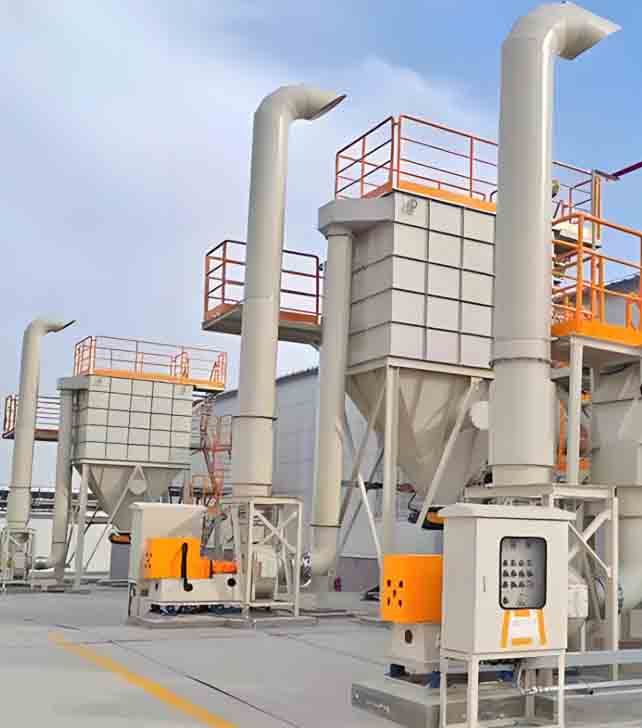
|

|
Customer buy pulse jet bag filter usually also purchase
Darko has over ten years of in-depth industry experience. The company has accumulated rich industry expertise. Darko provides clients with one-stop equipment solutions, including project communication, on-site surveys, design and development, production, transportation, and installation services throughout the entire process.
Our clients typically require complete sets of customized filtration devices. Having a complete set of bag fiter equipment can save considerable time and effort in matching devices during operations, thereby enhancing production efficiency. Complete bag fiter equipment sets are manufactured by the same producer, ensuring consistent specifications for all components and avoiding compatibility issues that may arise between different brands. This reduces the failure rate of the equipment and helps maintain stable production quality.

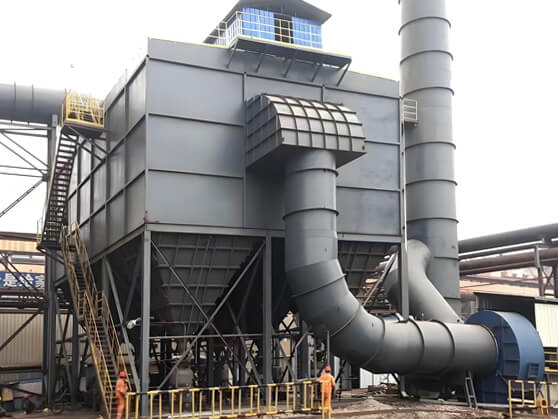
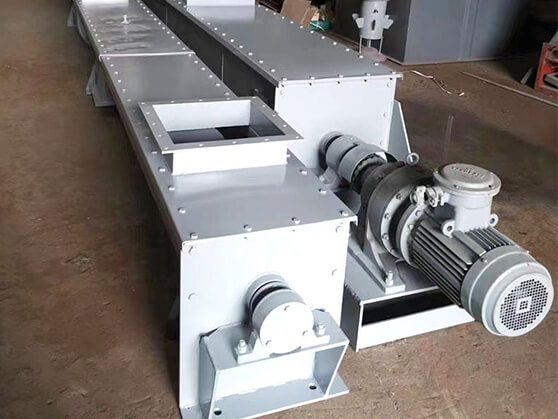 The U-shaped screw conveyor features easy cleaning, convenient maintenance, and good thermal insulation.
The U-shaped screw conveyor features easy cleaning, convenient maintenance, and good thermal insulation. 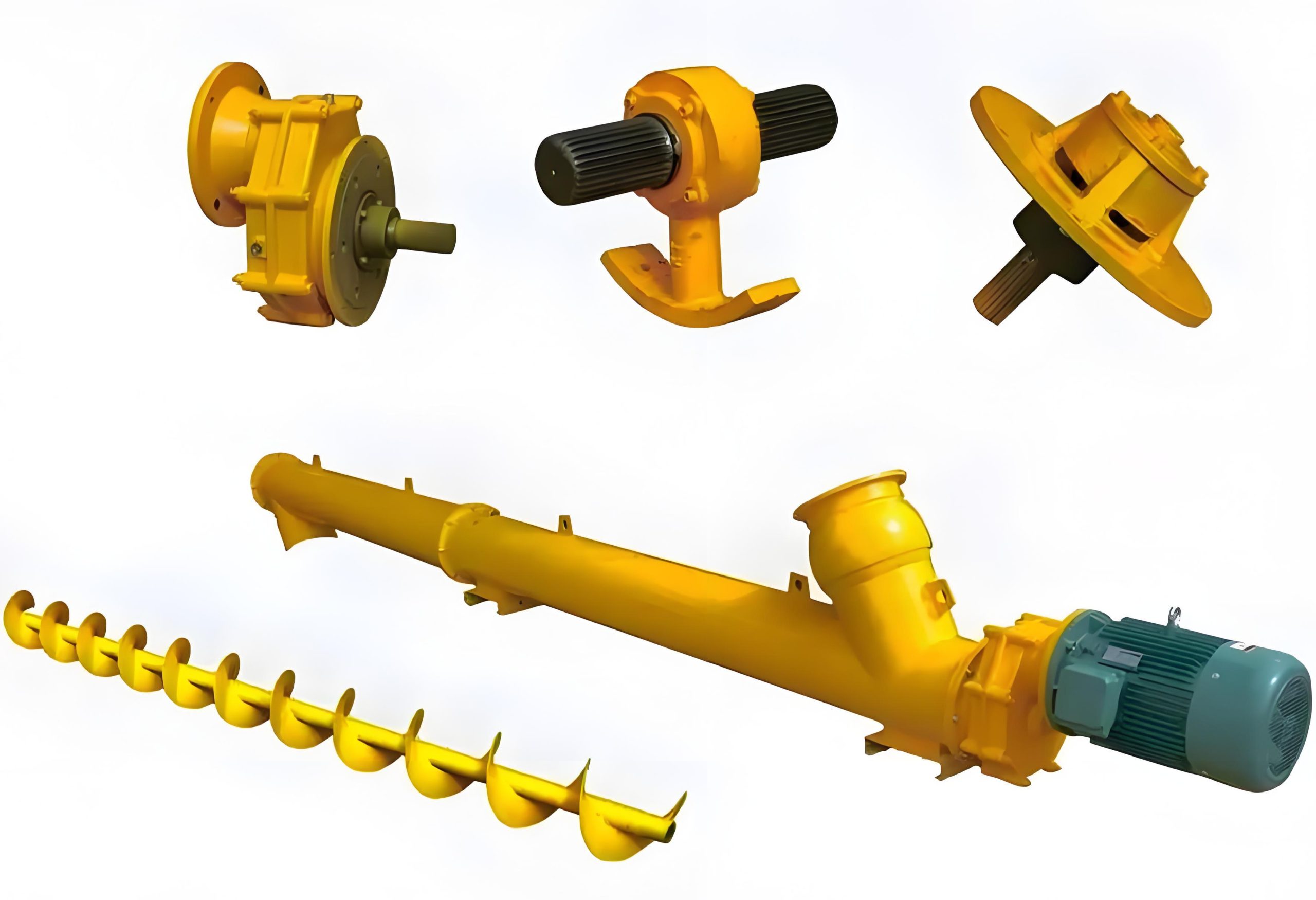 An auger conveyor has the capacity ranges from 1 to 100 tons/hour. It’s speed can range from 30 to 300 RPM. Darko accepts customization
An auger conveyor has the capacity ranges from 1 to 100 tons/hour. It’s speed can range from 30 to 300 RPM. Darko accepts customization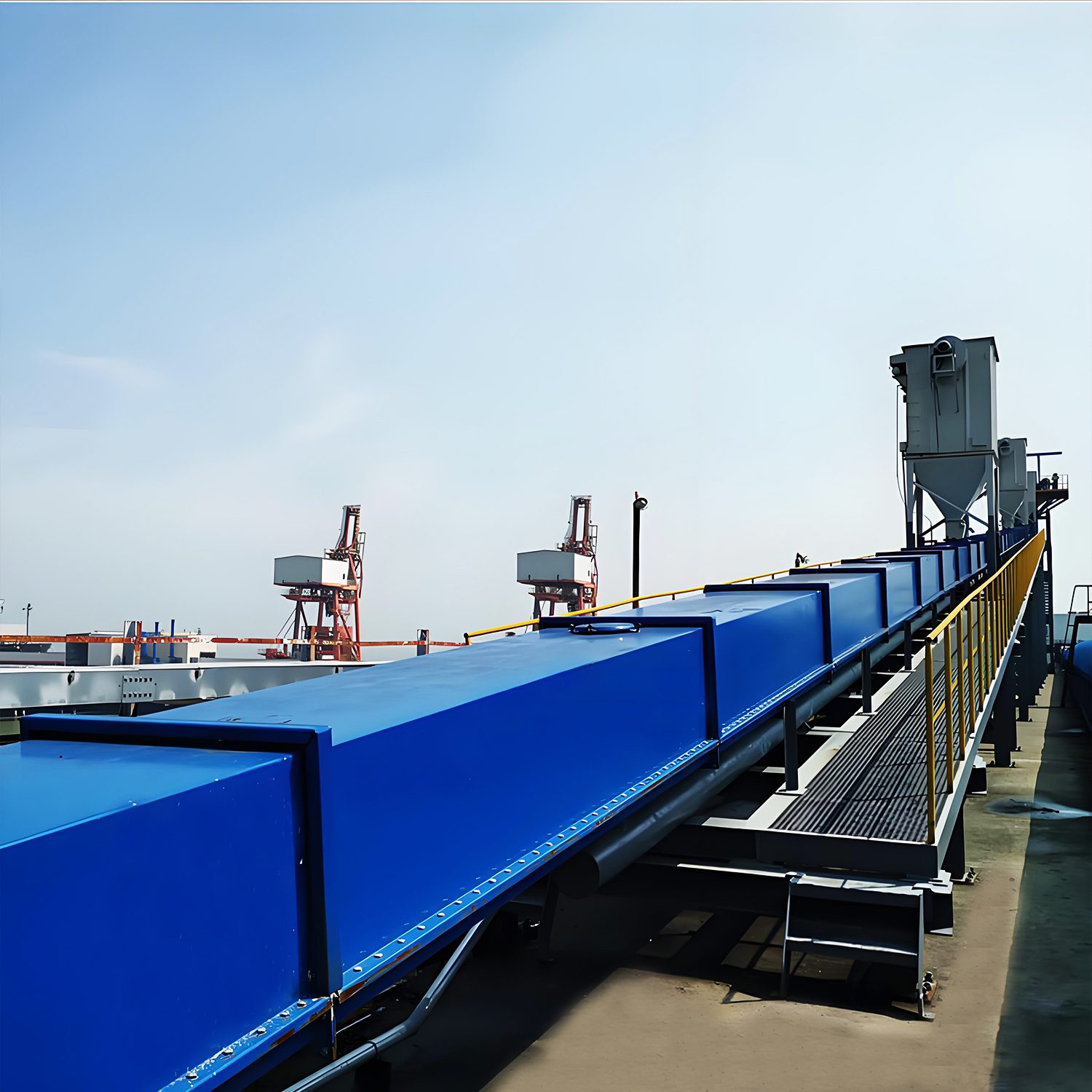
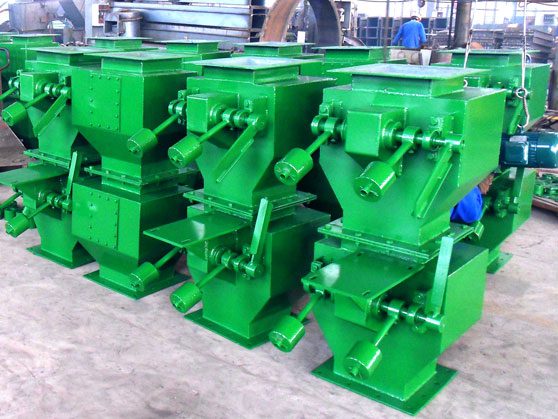
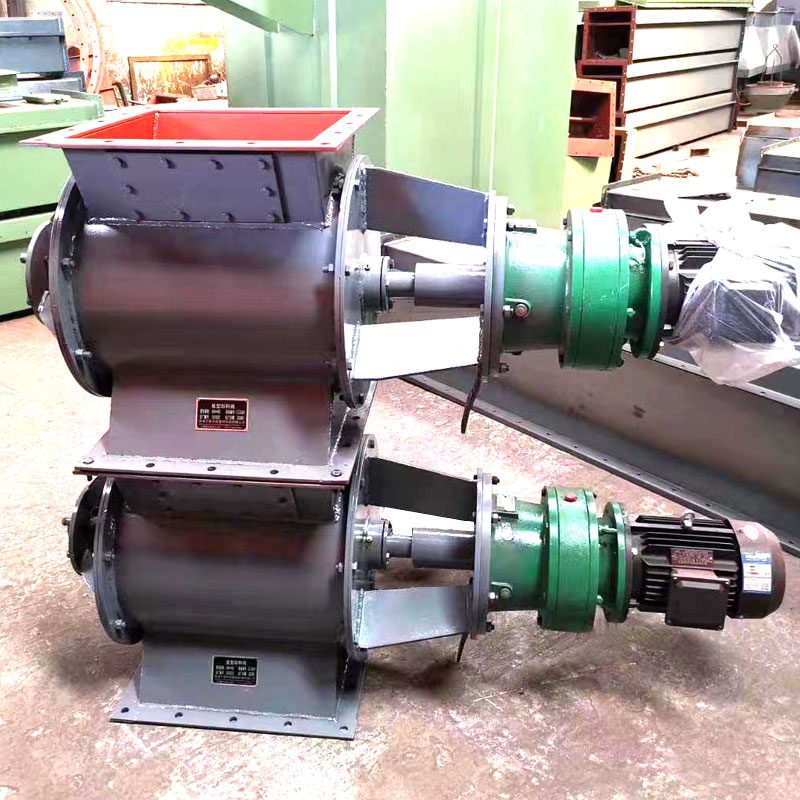 Dako designs and produces the rotary valve . This feeder is mainly used in the pneumatic conveying process . It is efficient and stable .
Dako designs and produces the rotary valve . This feeder is mainly used in the pneumatic conveying process . It is efficient and stable .